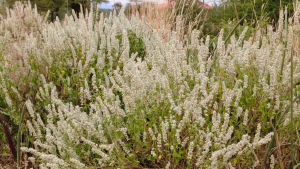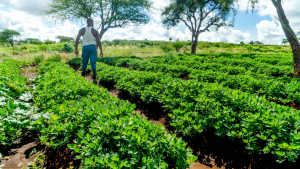
By marrying traditional farming with the strategic planting of over 500 tree species, Ambokili Farm is breathing life back into the earth, turning degraded lands into thriving ecosystems. This agricultural method, which integrates trees and shrubs into crop and livestock systems, is more than just planting trees among crops. It’s about creating a symbiotic relationship between different plant species and the environment to foster a more biodiverse, sustainable, and resilient agricultural system.
What is Agroforestry?
Agroforestry, a practice as ancient as agriculture itself, involves integrating trees and shrubs into agricultural landscapes. This symbiotic relationship between flora and fauna creates a dynamic, biodiverse ecosystem that supports not only the growth of crops but also the health of the planet. Agroforestry systems can vary widely, from alley cropping and Silvopastoral systems to forest farming, each tailored to the unique environmental and social contexts of a region.
Agroforestry: A Part of Sustainability
Agroforestry’s benefits stretch far beyond its immediate environmental impact. By marrying agriculture with forestry, it creates a dynamic, multi-functional system where every element works together to restore soil health, conserve water, increase biodiversity, and enhance ecosystem services. This method is especially pivotal in semi-arid regions, where water scarcity and soil degradation pose significant challenges to traditional farming practices.
One of the core principles of agroforestry is its focus on mimicking natural ecosystems. This approach ensures that agricultural landscapes can support a wide range of life, sequester carbon, and regenerate the soil, all while providing abundant yields. Such systems are incredibly resilient, capable of withstanding the vagaries of weather and climate change, making them an essential strategy in our fight against global warming.
Diverse Benefits of Agroforestry to the Planet and Its People
The ecological benefits of agroforestry are manifold. It effectively reduces the carbon footprint of agriculture, stores carbon in the soil and biomass, and increases the resilience of the land against climate change. Moreover, it provides habitats for a diverse array of wildlife, helping to conserve biodiversity while offering valuable ecosystem services such as pollination and pest control.
For communities, agroforestry holds the promise of sustainable livelihoods. It can enhance food security by diversifying production, improve nutrition through a variety of crops, and increase income opportunities from different products like fruit, nuts, and medicinal plants. Moreover, it contributes to social cohesion, as it often requires collective effort and knowledge sharing, thereby strengthening community ties.
Ambokili Farm: A Testament to Agroforestry's Power
Nestled in the semi-arid expanse of Kimana, Ambokili Farm stands as a testament of environmental conservation and community development. By integrating agroforestry into our organic farming practices, we have transformed an arid terrain into a self-sustaining, biodiverse ecosystem. Our farm has grown over 500 trees of different species, creating a diverse ecosystem that benefits our crops, conserves water, and revitalises the soil.
This transformation is not just about changing the landscape; it’s about changing lives. Through our focus on agroforestry, we aim to empower communities, enhance food security, and foster a deep connection between people and the planet. Our efforts demonstrate how agriculture can be a force for good, restoring ecosystems while providing for the needs of humanity.
The Future of Agroforestry at Ambokili Farm
The success of Ambokili Farm illustrates the transformative power of agroforestry in addressing some of the most pressing challenges of our time: climate change, biodiversity loss, and food insecurity. By integrating trees into agricultural landscapes, the farm not only enhances the environment but also offers a blueprint for sustainable living. At Ambokili Farm, agroforestry is more than a practice; it’s a philosophy that guides everything we do. As we look to the future, our commitment to expanding agroforestry practices remains unwavering. We are dedicated to sharing our knowledge and experiences, inspiring others to join us in this green revolution.
Why Choose Agroforestry?
The answer is clear: for the health of our planet and the well-being of its people. Agroforestry stands at the intersection of agriculture and forestry, offering a holistic approach to land use that harmonizes with nature. It’s a solution that not only addresses environmental degradation but also paves the way for a sustainable, resilient future.
FAQs
Q: Can agroforestry work in all types of climates?
A: Yes, agroforestry can be adapted to a wide range of climates by selecting appropriate tree and crop species for the local environment.
Q: How does agroforestry contribute to climate change mitigation?
A: Agroforestry sequesters carbon in the biomass of trees and the soil, reducing greenhouse gas concentrations in the atmosphere.
Q: What are the first steps for a farmer interested in agroforestry?
A: The first step is to assess the land and consult with agroforestry experts to design a system that suits the local climate, soil, and socio-economic conditions.
Conclusion
Ambokili Farm stands as a testament to the transformative power of agroforestry, turning semi-arid lands into lush, biodiverse ecosystems. Through its commitment to environmental conservation, organic permaculture, and community development, the farm not only sustains its surroundings but also inspires a global movement towards sustainable agriculture. As we witness the greening of the desert at Ambokili, we’re reminded of the resilience of nature and the potential for regeneration in even the most barren landscapes. Agroforestry isn’t just farming; it’s a path to a more sustainable, equitable, and verdant world.






